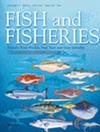A Safe Operating Space for Salmon Watersheds Under Rapid Climate Change
IF 6.1
1区 农林科学
Q1 FISHERIES
引用次数: 0
Abstract
Climate change and local pressures are eroding the health and performance of many watersheds and their freshwater ecosystems, pushing these complex social‐ecological systems to the boundaries of their safe operating space. Here, we offer a synthetic perspective on the downscaled application of the safe operating space concept to inform the stewardship of watersheds in this time of rapid climate change, with particular focus on watersheds that support coldwater migratory fishes such as Pacific salmon. First, we review the safe operating space concept as it applies to salmon watersheds as social‐ecological systems. Salmon watersheds, and the benefits they provide for diverse peoples, are under enormous cumulative pressure from climate change as well as local activities such as forestry, urbanisation, mining and agriculture. We identify four general syndromes of dual local and climate pressures. For example, local pressures, such as the removal of riparian vegetation that shades streams, can exacerbate climate warming of water temperatures. Furthermore, extractive industries can damage or destroy future habitats and thus erode adaptive capacity. As an illustrative example of how the safe operating space concept can be operationalised, we assess alternative plausible watershed futures of land use and climate change scenarios and salmon performance. Collectively, this work showcases tangible options for local management to help give salmon watersheds the time and space to cope with climate change. More broadly, while there is a global need to address climate change, local watershed management is a key component of pathways towards freshwater sustainability and their services for humanity.快速气候变化下三文鱼流域的安全生存空间
气候变化和当地压力正在侵蚀许多流域及其淡水生态系统的健康和性能,将这些复杂的社会生态系统推向其安全运行空间的边界。在这里,我们对安全操作空间概念的小规模应用提供了一个综合的视角,以在这个气候快速变化的时代为流域的管理提供信息,特别关注支持冷水洄游鱼类(如太平洋鲑鱼)的流域。首先,我们回顾了安全操作空间的概念,因为它适用于鲑鱼流域作为社会生态系统。由于气候变化以及林业、城市化、采矿和农业等当地活动,鲑鱼流域及其为不同民族提供的利益受到了巨大的累积压力。我们确定了当地和气候双重压力的四种一般综合征。例如,当地的压力,如去除遮蔽溪流的河岸植被,会加剧水温的气候变暖。此外,采掘业可能破坏或破坏未来的栖息地,从而削弱适应能力。作为安全操作空间概念如何运作的说明性示例,我们评估了土地利用和气候变化情景以及鲑鱼表现的其他合理流域未来。总的来说,这项工作为地方管理提供了切实可行的选择,以帮助鲑鱼流域有时间和空间应对气候变化。更广泛地说,虽然全球需要应对气候变化,但地方流域管理是实现淡水可持续性及其为人类服务的途径的关键组成部分。
本文章由计算机程序翻译,如有差异,请以英文原文为准。
求助全文
约1分钟内获得全文
求助全文
来源期刊

Fish and Fisheries
农林科学-渔业
CiteScore
12.80
自引率
6.00%
发文量
83
期刊介绍:
Fish and Fisheries adopts a broad, interdisciplinary approach to the subject of fish biology and fisheries. It draws contributions in the form of major synoptic papers and syntheses or meta-analyses that lay out new approaches, re-examine existing findings, methods or theory, and discuss papers and commentaries from diverse areas. Focal areas include fish palaeontology, molecular biology and ecology, genetics, biochemistry, physiology, ecology, behaviour, evolutionary studies, conservation, assessment, population dynamics, mathematical modelling, ecosystem analysis and the social, economic and policy aspects of fisheries where they are grounded in a scientific approach. A paper in Fish and Fisheries must draw upon all key elements of the existing literature on a topic, normally have a broad geographic and/or taxonomic scope, and provide general points which make it compelling to a wide range of readers whatever their geographical location. So, in short, we aim to publish articles that make syntheses of old or synoptic, long-term or spatially widespread data, introduce or consolidate fresh concepts or theory, or, in the Ghoti section, briefly justify preliminary, new synoptic ideas. Please note that authors of submissions not meeting this mandate will be directed to the appropriate primary literature.
 求助内容:
求助内容: 应助结果提醒方式:
应助结果提醒方式:


